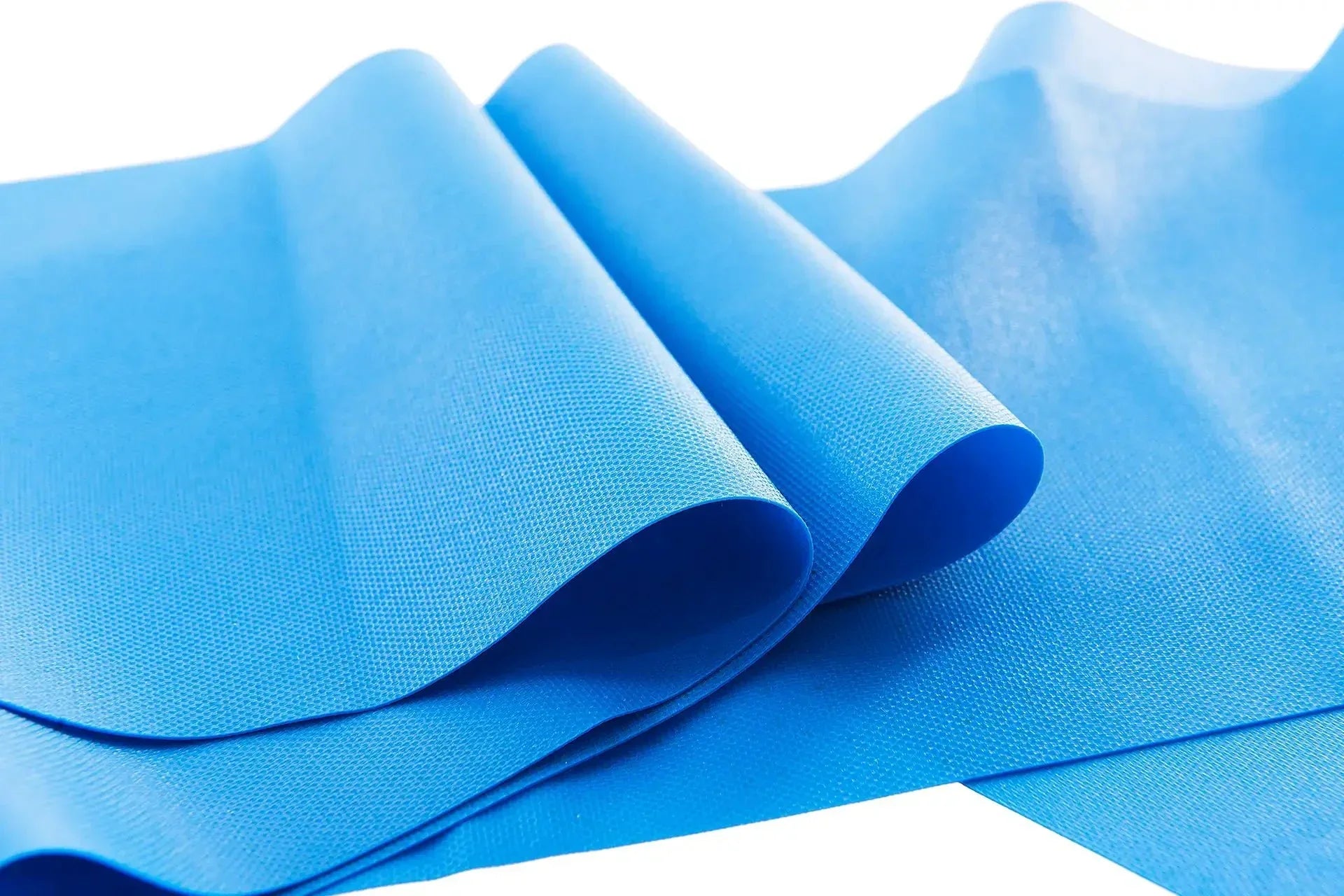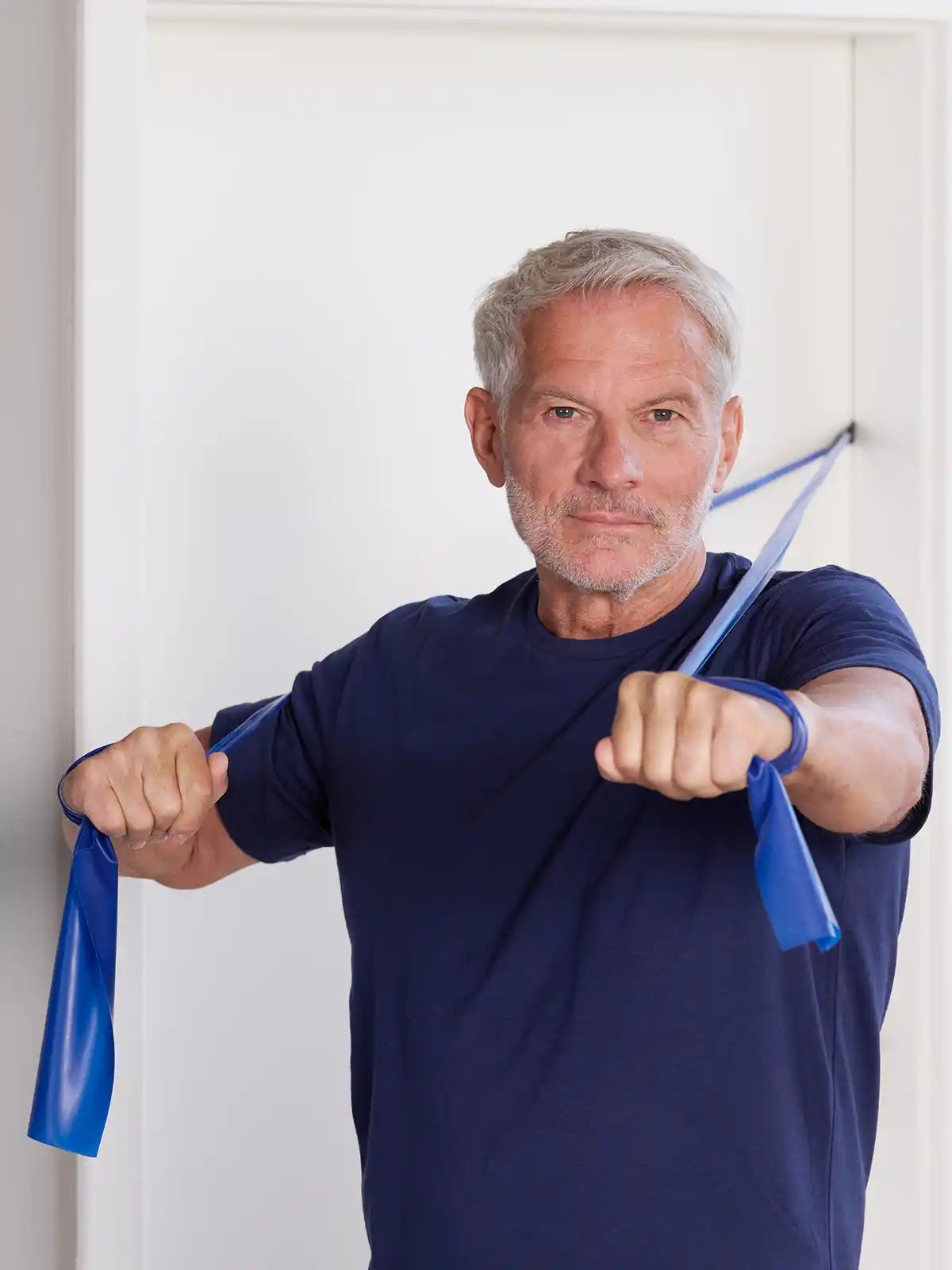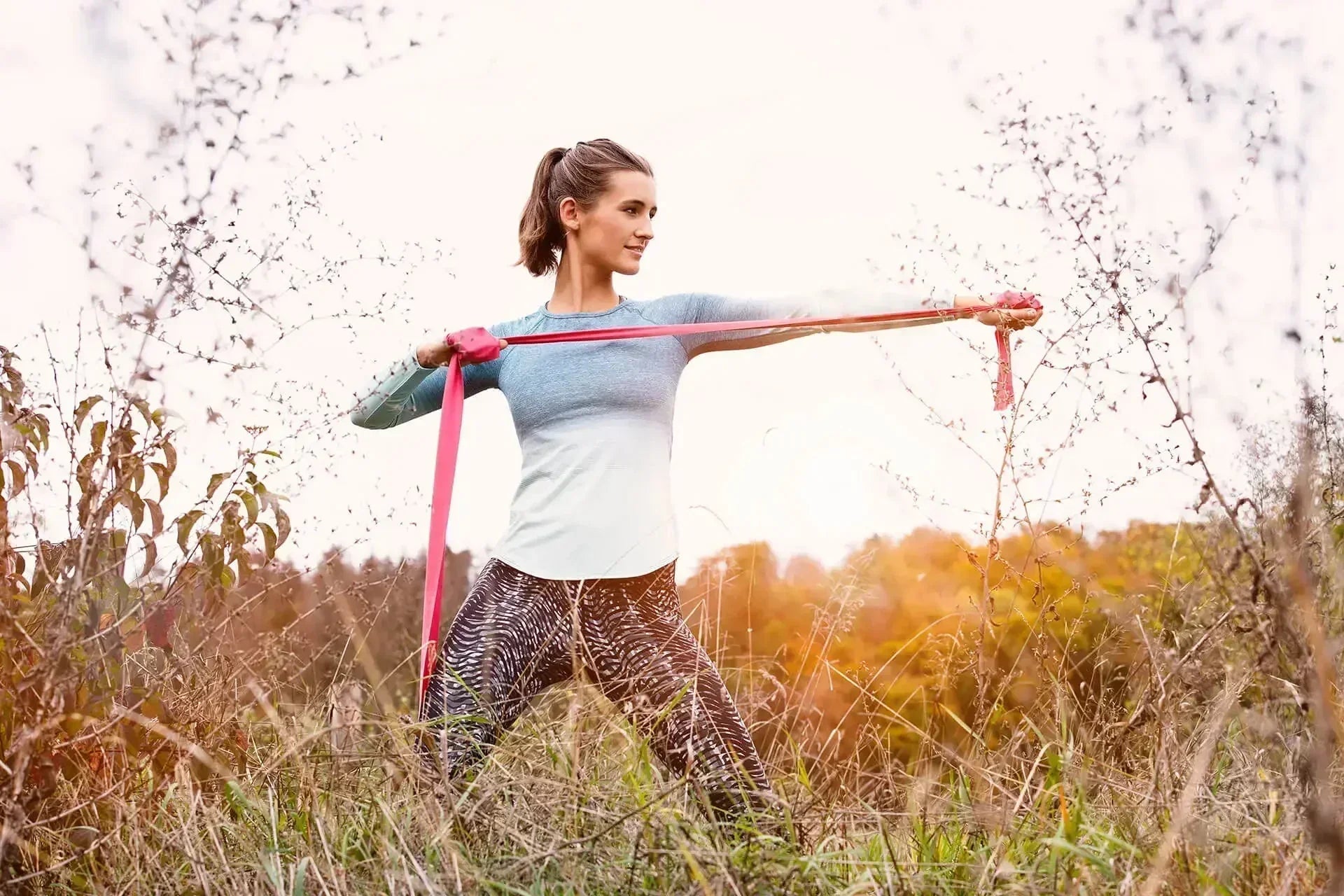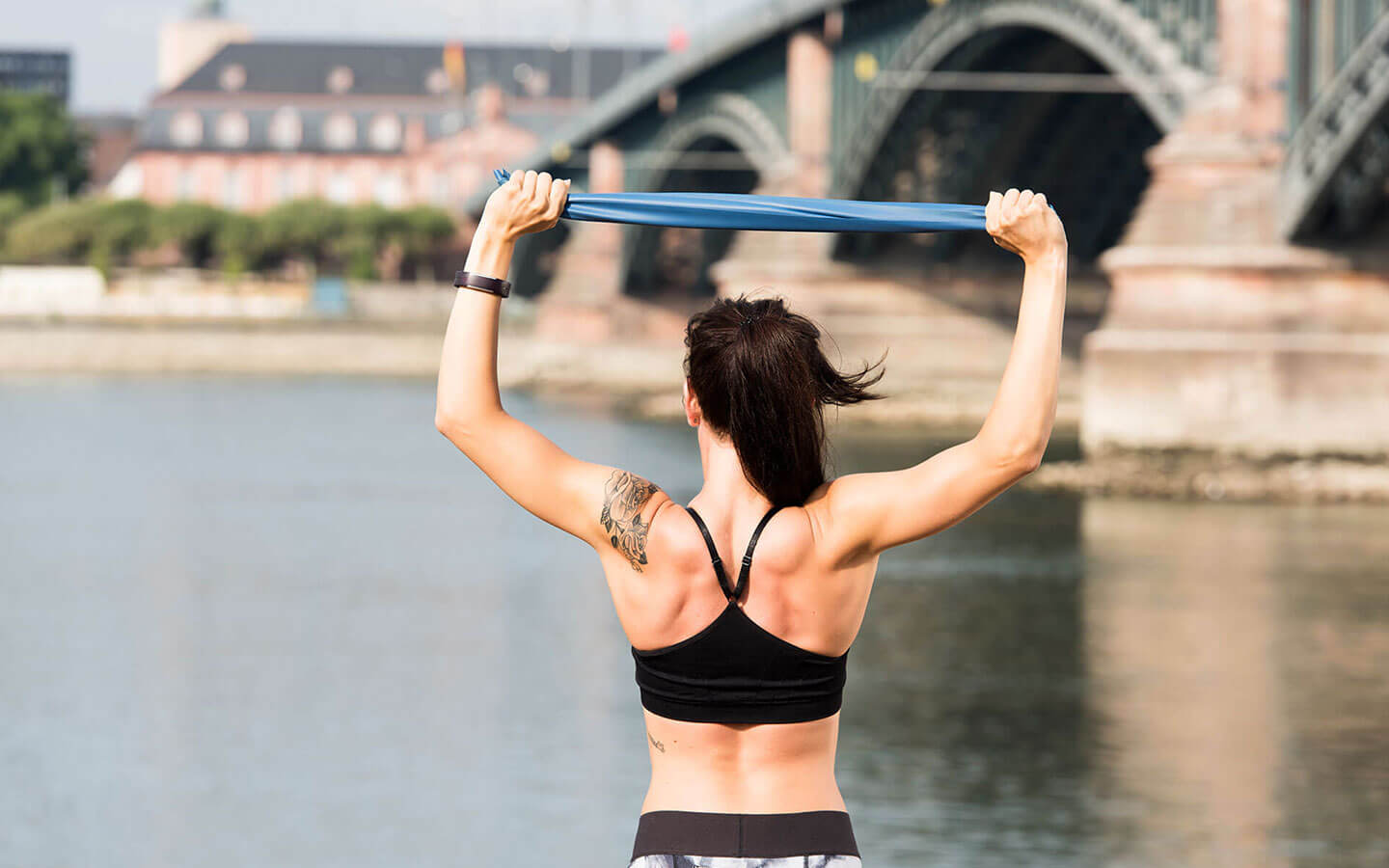
Cleaning Fitness equipment - How do I do it right?
Even after Corona, hygiene for fitness equipment is an issue. Even with fitness tools that are only used by a few people, we increasingly make sure that they are clean and, ideally, free of viruses and bacteria. But how does the effective cleaning of Theraband, fascia roll and yoga mat work?
Contents
Trend natural materials
In the fitness sector and in health care, the trend is also towards the use of natural materials such as wood, cork and leather, but also latex, which is used in many fitness bands. These materials are quite sensitive when treated with conventional disinfectants.
Latex in particular suffers and can become brittle when it comes into contact with aggressive substances. Wood and cork are known for being self-cleaning and, to a certain extent, antibacterial – only to a certain extent, of course.
But is that enough if they are covered with sweat, skin fat and particles after hard training or intensive use? Certainly not!
Exercise bands made of natural latex
Thera bands , floss bands and the like, i.e. everything made of natural latex, are best cleaned under lukewarm, running water - under no circumstances should they be soaked. That's when latex swells! For really stubborn dirt, and this is the emphasis, mild soap can be used and rinsed off immediately and thoroughly. Important for latex bands: Before the next use, they must be thoroughly dried and powdered from time to time (e.g. with commercially available baby powder)!
If it is necessary to disinfect latex, for example because there is prolonged skin contact with the user when using a raft, disinfectants containing alcohol can be used.
Disinfectants containing alcohol score with short exposure times, but reduce the durability of latex fitness tools. Therefore, exercise bands made of latex and therapy bands should be checked for the smallest holes or tears in the material before each use.
Special hygiene cleaners for latex products are also available, which clean and disinfect in one process without damaging the material.
Soaped: The simplest cleaning is also the most effective
When it comes to combating viruses, soap is superior to many disinfectants: it removes greasy dirt. Viruses are also surrounded by a greasy shell, which is broken up when washing, just like greasy dirt on the hands. As a result, the virus is destroyed.
Only disinfectants with high-percentage alcohol can achieve a similar effect, but they have to be applied very generously. Soap also has the advantage that due to the foam, it spreads very evenly and everywhere, even in the smallest niches and folds.
Important: The duration of the cleaning also plays a role and so you should be just as thorough when washing (off) the fitness tools as you are when washing your hands.
Cork yoga mats
Cork, a natural material, is being used more and more frequently when it comes to fitness. Whether yoga blocks, fascia tools or even yoga mats , the haptically pleasant and skin-friendly natural material has enthusiastic followers.
Cork is also quite undemanding when it comes to cleaning: On the one hand, the material itself has an antibacterial effect, which means that bacteria and viruses do not settle on it so easily. On the other hand, cork can be wiped off with water and, if necessary, a mild soap solution and thus thoroughly cleaned.
A conventional alcohol-based surface disinfectant can be used for disinfecting. But it can also be done less aggressively: Yoga athletes in particular swear by vinegar-based cleaning sprays, enriched with the antibacterial and antiviral essential tea tree oil. To do this, mix 750 ml distilled water, 250 ml apple cider vinegar and 20 – 30 drops of tea tree oil in a spray bottle.
Spray the surfaces of the cork tools generously with this solution, leave to work for a short time and then wipe off thoroughly.
Wooden massage tools
The sustainable material wood is also being used more and more in the fitness and wellness area and scores with its natural antibacterial properties. High-quality wooden tools such as the TriggerWoods are also pre-treated with natural oils and waxes and are therefore abrasion-resistant and water-repellent.
It should be noted that silicone strips are processed on the wood for better handling, which should not be cleaned with disinfectants containing alcohol. For cleaning, the wood and silicone can be wiped off with a mild soap solution - we recommend using commercially available wood soaps, which are particularly gentle. A surface disinfection with the above-mentioned spray made of water, vinegar and tea tree oil or a professional, alcohol-free disinfectant is also possible.
Important: After a short exposure time, the applied agent must be wiped off thoroughly and the wood carefully dried in order to maintain the surface finish.
Vintage leather products
The same applies to leather : Slight dirt can first be cleaned with a damp cloth and leather soap – the good old saddle soap can be used here. Saddle soap has the same properties as conventional soap and, when used correctly, i.e. thoroughly, also eliminates bacteria and viruses through its foam.
If it needs to be a bit more thorough, the market has special hygiene cleaners for leather ready. These consist of a cleaning surfactant suitable for leather - i.e. soap - and a small percentage of isopropyl alcohol, which supports the germicidal effect of the soap. These cleaners also contain lactic acid, which also has a disinfecting effect.
One thing is clear: every thorough cleaning dries out the leather and makes it brittle over time, which is why cowhide should be treated with high-quality sunflower oil after drying if necessary.
Use professional disinfectants correctly
If you want to sterilize your fitness tools with professional disinfectants, you should make sure that the object is not only completely covered with the liquid, but also that the minimum exposure time specified by the manufacturer is observed.
Just spraying it on thinly and wiping it off is ineffective and misrepresents the facts about eliminating bacteria and viruses! As with washing hands and cleaning with soap, the factors of thoroughness and time are also important here.
Fascia instruments stainless steel
Professional tools made of stainless steel should of course not only be thoroughly cleaned of skin fat and scales after each use, but also disinfected. So: First, mechanically, i.e. with water, soap and a cloth/brush, clean all parts that have had skin contact and then disinfect with an alcohol-based surface disinfectant.
If the fazers are not needed again immediately, they can also be disinfected with the help of steam (e.g. in a vaporizer) or boiled.
Mats, bands, balance trainers and foam rollers made of plastic
Whether silicone, TPE (thermoplastic rubber), EPP (polypropylene), polyisoprene (synthetic rubber) or polyethylene, numerous fitness tools are made of a wide variety of plastics. Plastics offer a high quality of use and are easy to care for - in this respect ideal for daily use in the fitness studio, physical therapy and also in the private sphere.
But the latex-free exercise bands, stability trainers, gymnastics mats and many products not only deserve thorough, but also gentle cleaning so that you can enjoy them for a long time.
The same applies to all plastic products: thorough washing (off) with a mild soap solution is the method of choice for household use. In addition to the soap variant, plastic fitness tools can also be cleaned with alcohol-free disinfectants.






Leave a comment
This site is protected by hCaptcha and the hCaptcha Privacy Policy and Terms of Service apply.